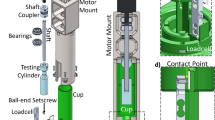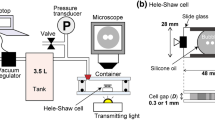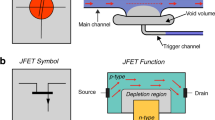Abstract
IN a recent letter1 Mr. A. C. Merrington points out that, when a material for which the viscosity decreases greatly with increase in rate of shear is investigated in a capillary viscometer, the resistance offered by the bulbs is a greater fraction of that offered by the capillary than when a true fluid is tested in the same apparatus. He thinks it possible that in some cases where anomalies have been reported in the relationship of flow-rate to capillary radius, the results can be completely accounted for by neglect of the bulb correction. He also thinks that in other instances it has influenced the results without being the whole cause of the observed anomalies.
This is a preview of subscription content, access via your institution
Access options
Subscribe to this journal
Receive 51 print issues and online access
$199.00 per year
only $3.90 per issue
Buy this article
- Purchase on SpringerLink
- Instant access to full article PDF
Prices may be subject to local taxes which are calculated during checkout
Similar content being viewed by others
References
Merrington, A. C., NATURE, 152, 214 (1943).
Schofield, R. K., and Scott Blair, G. W., Phys. Chem., 34, 248 (1930).
Author information
Authors and Affiliations
Rights and permissions
About this article
Cite this article
SCHOFIELD, R., BLAIR, G. Bulb Correction in Capillary Tube Viscometry. Nature 152, 477–478 (1943). https://doi.org/10.1038/152477d0
Issue date:
DOI: https://doi.org/10.1038/152477d0



